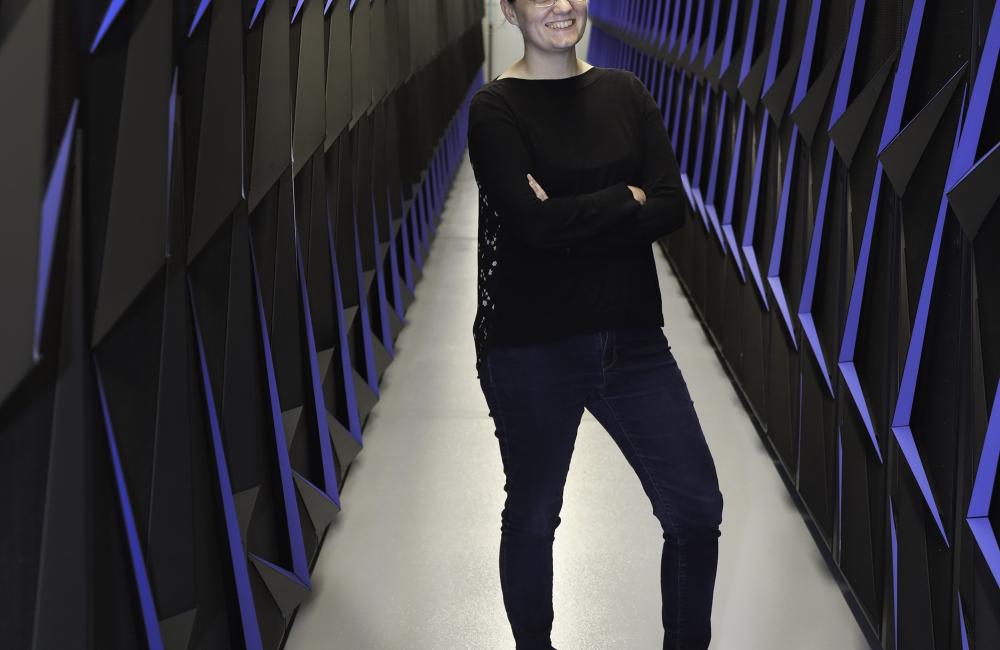Catherine Schuman. Image credit: Carlos Jones, ORNL
In 2019, nine ORNL early career researchers were recognized with prestigious awards from the White House and the Department of Energy—the Presidential Early Career Award for Scientists and Engineers, or PECASE, and the DOE Early Career Research Program Award. We sat down with these promising young scientists to talk about their backgrounds and current research.
Even as a child, Catherine Schuman liked the challenges fundamental to computer science.
“I always liked puzzles, especially analytical puzzles,” Schuman said. “Code is exactly that.”
Her father, a math teacher, and her brother, a programmer, introduced Schuman to computers early, but as a teenager, the Harriman, Tennessee, native also enjoyed biology. She kept a pamphlet detailing the mammalian genetics research at ORNL’s “Mouse House” on her bookshelf.
Today, her research on neuromorphic computing—a novel, energy-efficient technology that mimics biological neural networks like those in the human brain—allows Schuman to combine both interests. The speed, efficiency and localized networks of neuromorphic computers make them useful for a wide range of applications, from autonomous vehicle sensing to edge computing, in which data is stored and processed near where it is generated.
Schuman became interested in nature-inspired machine learning techniques such as neural networks as an undergraduate studying computer science and math at the University of Tennessee, where she stayed for her Ph.D. in computer science. At ORNL in 2015, she accepted a Liane B. Russell Fellowship—named after the pioneering geneticist whose work inspired Schuman years earlier.
For her Early Career Award-winning proposal, “Learning to learn: Designing novel neuromorphic algorithms with machine learning,” Schuman will use machine learning with high-performance computing to develop new training and learning algorithms for neuromorphic computers. Algorithms are instructions computers follow to solve problems.
The first step in the research is to simulate neuromorphic hardware, which swaps traditional processing systems for artificial neurons and synapses, on ORNL’s Summit and upcoming Frontier supercomputers. She’ll imitate what neuromorphic chips, which are still very new, might look like in the future.
Then, she’ll use high-performance computing with the simulators she built to study existing learning algorithms, aiming to improve the algorithms for the new hardware.
Last, she’ll use machine learning to develop entirely new algorithms. The goal is to find approaches to analyze scientific data using neuromorphic computers, since the novel systems show promise in overcoming limitations of traditional computing.
“Being able to use the world’s fastest computers to explore innovative ways of doing machine learning for new types of computers is really exciting,” Schuman said. “You get to do something for the first time, which is not always the case.”—Abby Bower


